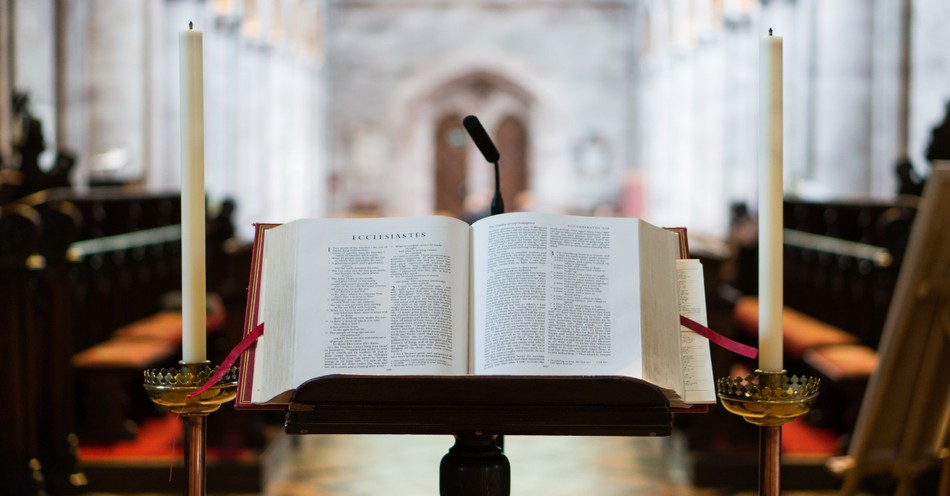Reformed denominations within Christianity use and refer to the Westminster Confession of Faith. In our modern day of increased influencer-generated Bible teaching, many people have become ignorant regarding these ancient documents. Yet the Westminster Confession of Faith has had a great impact on Christian faith through the centuries.
Within Christianity, a confession of faith formally states and summarizes core biblical beliefs held by a certain church network or denomination. It outlines foundational and essential doctrines about God, salvation, Scripture, and discipleship to provide a systematic understanding of faith. Christian groups often create confessions to establish a unified and shared core of beliefs so churches teach and worship along the same basic tenets, creating a doctrinal unity.
Many who do know about the Westminster Confession of Faith associate it with Presbyterian denominations. However, it has a rich and important history with important lessons for all Christians.
What is the Westminster Confession of Faith?
The Westminster Confession of Faith (WCF), created in the mid-17th century, outlines the core beliefs of what we call Reformed Christianity. Composed by the Westminster Assembly in England, it provides a more comprehensive summary of doctrine for the Church of England.
The WCF begins by affirming the Bible as the inspired Word of God and the guide for faith and life. The confession outlines the nature of God and the Trinity—Father, Son, and Holy Spirit—eternal, unchanging, and all-powerful. From this point, the WCF teaches that all people are born sinners from the sin of Adam. As such, humanity is unable to save themselves through their own efforts. But God offers salvation by grace through faith in the Lord Jesus Christ, who lived a perfect life, died for sinners, and rose again. The confession, therefore, declares salvation by faith and grace alone, not by works.
God’s providence and sovereignty are a main theme of the confession, an important distinction for Reformed believers. The WCF states that God governs all events in the world according to his will, which is perfect, and nothing happens by chance. They believe God controls all circumstances.
The confession includes instruction on religious sacraments like the Lord’s Supper and baptism, that these are signs of God’s New Covenant to build the church community. The WCF highlights how the church remains the visible witness of Christ, called to worship, serve, and share the Gospel together. In Christian living, the confession teaches the pursuit of holiness, love for others, and obeying God’s commandments. Ultimately, believers should glorify God in every aspect of life.
What is the History and Development of the Westminster Confession of Faith?
The Westminster Assembly was a group of theologians and church leaders in England, called by the English Parliament to create a unified theological statement for the Church of England. The Assembly gathered from 1643 to 1649. At that point in history, the young Reformation was still mired in chaos and conflict, political and religious, throughout Europe. The Parliament hoped this confession would establish a unified way forward for the state church and the government.
The Assembly formed with 121 ministers added to some lay advisers and government officials. These leaders mostly came from Puritan and Presbyterian groups, heavily committed to Reformed theology. The Assembly met at Westminster Abbey in London under the direction of Parliament, representing England, Scotland, and Ireland. At first, Parliament told them to revise the 39 Articles of the Church of England, but they quickly expanded the goal to drafting a whole new confession of faith. The theologians approached the work through debate and refining each point over the years. They first relied upon the Bible but also drew from other existing confessions from the Scots and the Irish Articles of Religion.
As happens with such theological discussions, the debates were often contentious and exhaustive, as the members took the task seriously to be precise and provide clarity on doctrine. Topics like the nature of God, salvation, and the church were discussed in minute detail. Despite many different views on a few issues, the assembly did reach a consensus. The Westminster Assembly submitted the confession to the English Parliament for approval in 1646. The English Civil War and other political problems delayed the decision. In the meantime, Scotland’s General Assembly of the Church of Scotland (the Scottish have a very independent government within the UK) accepted the WCF in 1647. The English Parliament later adopted it, as well.
The Westminster Confession grew to have broad influence as Presbyterian churches adopted it and spread around the world. Some denominations have modified some sections, but the core teachings remain respected within Reformed denominations.
How is the Westminster Confession of Faith Used Today?
The WCF is primarily used within Presbyterian denominations. Denominations like the Presbyterian Church in America, the Orthodox Presbyterian Church, and the Free Church of Scotland recognize it as a standard, not as important as Scripture but secondarily authoritative for defining theology. Ministers in these denominations must affirm the confession.
These Presbyterian churches use the WCF as a tool for catechizing members, especially in the Larger and Shorter Catechisms which go along with the larger confession and were written at the same time. The WCF offers a structure and framework for preaching and teaching with sound doctrine. In addition, the confession provides points about church discipline and governance.
Reformed Baptist Churches have also adopted the WCF, although they have modified it to align with a few Baptist doctrines like believer’s baptism. The Second London Baptist Confession of 1689 copies the WCF with a few adaptations, and Reformed Baptists use it in a similar way—for teaching, preaching, and governance.
A few Evangelical and non-denominational churches that lean toward Reformed theology have also adopted the WCF or portions of it. Others might use it but not require everyone to follow it strictly. Seminaries and other schools also use the WCF. Reformed seminaries include it in their curriculum to train pastors and theologians. The confession becomes an opportunity to find deeper understanding of Reformed theology and its application.
How Does the Westminster Confession of Faith Compare to Other Confessions?
While many confessions have common doctrines like the Trinity, the authority of Scripture, and salvation, the WCF contrasts as a more detailed and extensive presentation of Reformed theology.
Compared to the Apostles’ Creed and the Nicene Creed, both of which are far older, the WCF carries significantly more detail. Those earlier creeds serve as a more concise summary of essential Christian beliefs, trying to purposefully simplify as much as possible. The WCF dives deeper into theological issues. For example, the Apostles’ Creed has nothing about sacraments or church governance. The WCF further highlights what it feels is important—justification, sanctification, God’s sovereignty, and tradition.
As a longer and more detailed document, the WCF compares with the Belgic Confession, Heidelberg Catechism, and Cannons of Dort, all of which also come from the Reformed tradition. These documents share the same doctrine, often expressed through the Five Points of Calvinism. At the same time, the Westminster Confession is a longer and more detailed explanation of theology and connects the doctrine of the Sabbath and church politics, which the others don’t do.
The WCF finds differences with the Catholic Catechism and Lutheran-associated Augsburg Confession. The Catholic Catechism places more doctrinal authority on church leadership and sacraments as a means of grace, while the WCF points to Scripture and salvation by faith alone. The Augsburg Confession contains justification by faith alone but doesn’t include the Calvinist teachings on predestination and God’s sovereignty.
The Westminster Confession of Faith remains one of the most detailed and lengthy confessions in history. It is unique and influential due to its distinct Reformed doctrines.
What Can Christians Today Learn from the Westminster Confession of Faith?
The partnership between religion and government was common in the 1600s. Countries would declare a certain religious position, whether Catholic or Protestant, a remnant of the centuries when the Catholic Church held sway and power over the politics of Europe. The American mindset and Bill of Rights began to change this practice, however. We should likely be skeptical of any attempt the government makes (as Parliament did) to have power and direct the church to make such statements. Even if the original motives are pure, this partnership becomes manipulative and greedy. Hence why the Americans declared a freedom of religion from the state.
At the same time, the Westminster Confession of Faith did unify a certain segment of Christianity under a shared understanding of biblical truth. In a world in which we try to define our own truths and become more divided and fragmented as a result, such clear expression of theology and doctrine can be helpful. We begin at this point, grounding our faith in something tested across time, and a solid confession of faith can be passed down to later generations. The earlier creeds, especially the Apostles’ Creed, were more unifying across all Christianity due to their simplicity. The WCF distinguishes itself with Reformed theology like predestination, making that belief central. This limits the WCF’s use to a certain sect of believers.
In addition, the WCF teaches us that some doctrinal differences are allowed. It provides clarity on what it considers essential matters. As exhaustive as it may be, it still leaves room for discussion and adaptation in culture and time. For example, while the confession affirms Reformed theology, it doesn’t deal with every application, allowing for some variation. We should remember that unity on core beliefs doesn’t require agreement on every single detail.
The Westminster Confession encourages us to be humble in our engagement with Scripture. While we might disagree with some of the doctrine, the authors spent years in rigorous discussion and debate, always appealing to the Bible as the ultimate authority. We should all be committed to submitting to the truth of Scripture and appreciative of the leaders who went before. They have much to teach us. We can both value their input while staying open to reexamining non-essential doctrines in light of Scripture.
In a divided world and a fragmented Christianity with thousands of denominations, the Westminster Confession of Faith reveals the biblical need for a core framework to connect and unify Christians. We may choose to use the older and simpler Apostles’ or Nicene Creed, but these statements help us find common ground with other believers in what truly matters in living for God.
Peace.
Photo credit: ©Getty Images/steve228uk




